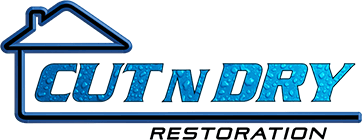Water Damage Restoration Cleanup
The aftermath of water damage from a big water leak is tough to navigate for homeowners who have never experienced flooding in their homes. Mold can grow on beloved items like couches, wooden furniture, upholstery, and more.
It’s important to take action as soon as possible to remove wet items from your home and sanitize whatever items are salvageable. A restoration company is typically going to be your best option for properly restoring household furniture as long as the damage isn’t irreparable.
Why You Should Hire a Restoration Company
The reason to hire a water damage restoration company relies on the extent of damage your home and belongings suffered from flooding. Professional cleanup allows the opportunity for you to consult with the restoration company about different options like sanitization, mold removal, drying damp areas, and restoring flooded areas of your home.
An experienced restoration professional can also help you throughout the entire restoration process, so you don’t have to figure it out alone. Initially, you should inspect your home for damaged items, and there are some items to pay attention to as they can hold onto moisture and become a health hazard over time.
Items that Should Be Replaced After Water Damage
You can choose what you want to toss after a flood, and consider these suggestions as well.
Medicine
If you had medicine in your home that was in an affected area, we suggest contacting your doctor about getting a replacement. Always toss medicine that has been damaged or tampered with in any way.
Hardwood Furniture
It’s true that most hardwood furniture can be cleaned after a flood. However, if you have hardwood furniture that is beyond repair, then we recommend that you throw it away. Hardwood accumulates mold over time, and if you have tried cleaning it with a disinfectant and allowed it to dry but still see mold growth, throwing it away will be your best bet.
Upholstered Furniture
If you have upholstered furniture like couches, loveseats, or even dining chairs, sometimes they can be dried using fans and dehumidifiers. However, some fabrics hold onto moisture and can grow mildew and other bacteria on your furniture.
If you decide that your furniture is salvageable, always allow your furniture to dry, and try vacuuming any remaining debris. To deodorize your furniture, sprinkle a little baking soda on it and then vacuum and repeat as needed.
Furniture Made of Laminate or Composite Materials
Furniture made from laminate and composite materials is likely to swell, bubble, warp, or even crumble when they come into contact with floodwater. If you have furniture or decorative items that are made of these materials, we suggest you dispose of them. The items can become weak after being submerged in water and are no longer useable.
Mattresses
Any mattresses that have been submerged in water should also be replaced, even if they appear to be salvageable. Some mattresses can be restored by completely drying and sanitizing them, however, it’s best to throw them away to avoid being exposed to mold.
Appliances
If your appliances were completely underwater, a professional can inspect them for damage. Large appliances like washing machines, refrigerators, stoves, and dishwashers can be cleaned with a disinfectant. If they were exposed to sewage, we suggest throwing them away, especially appliances that are meant to prepare food like stoves, toaster ovens, and refrigerators.


.2203031130550.jpg)